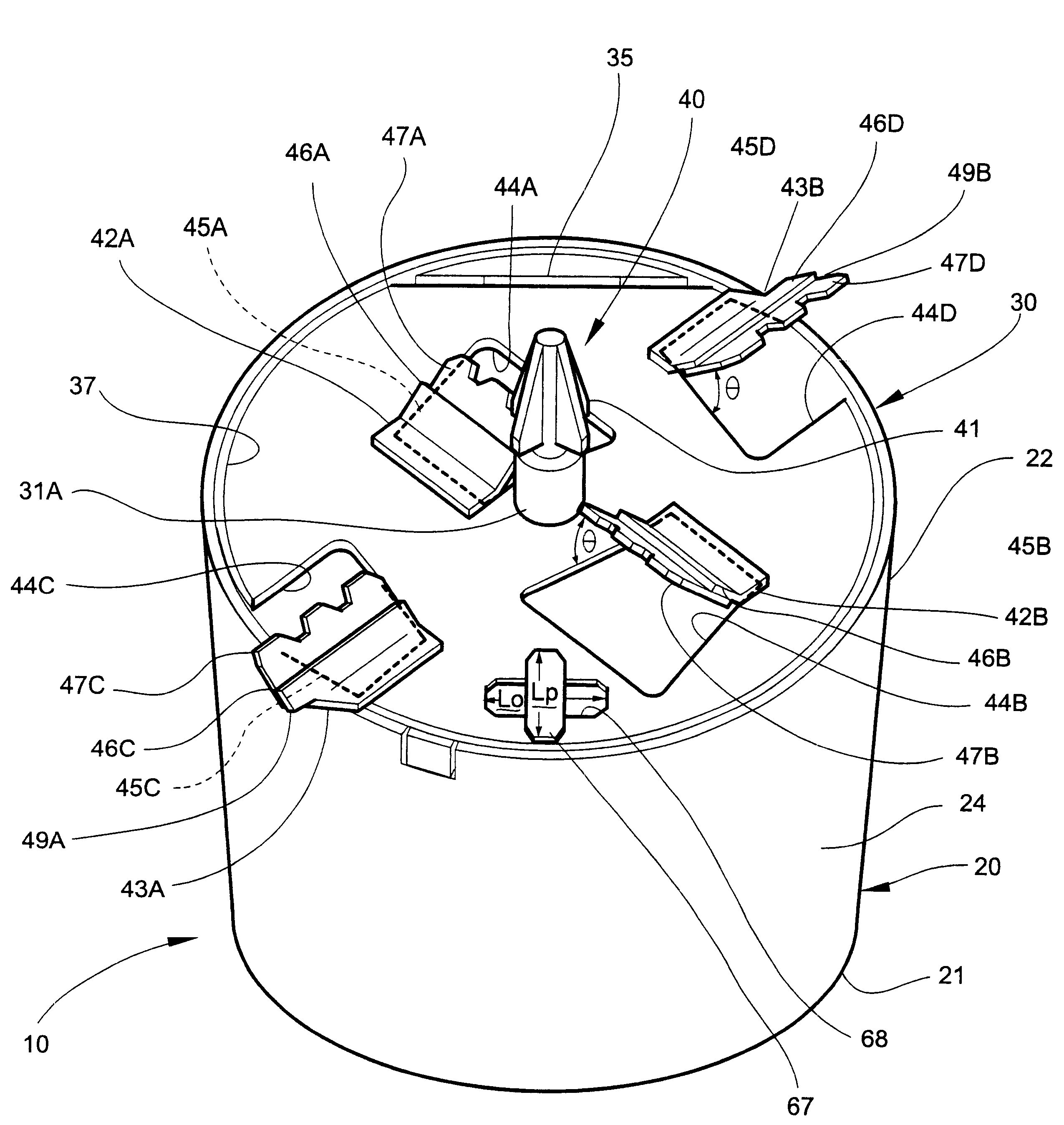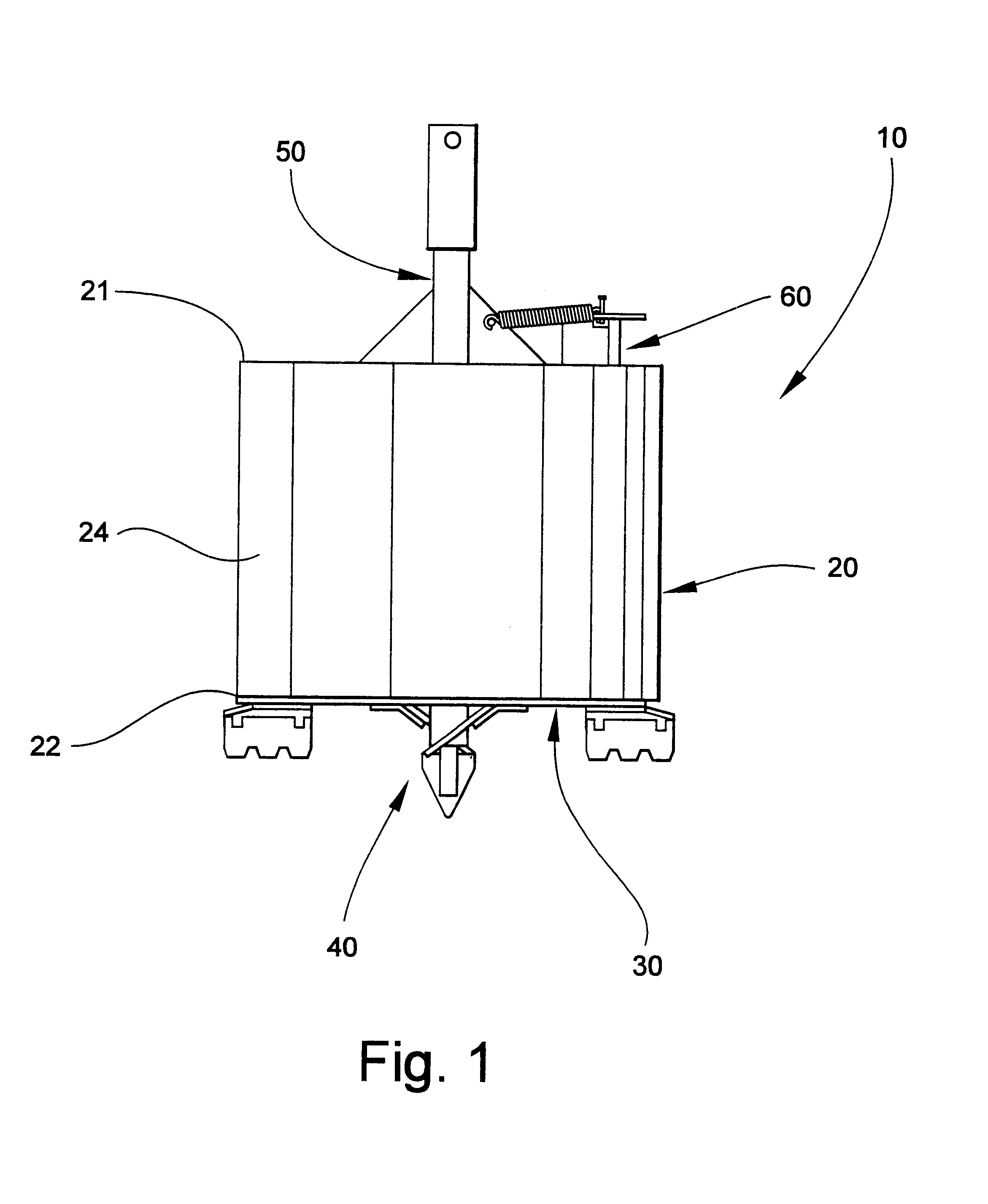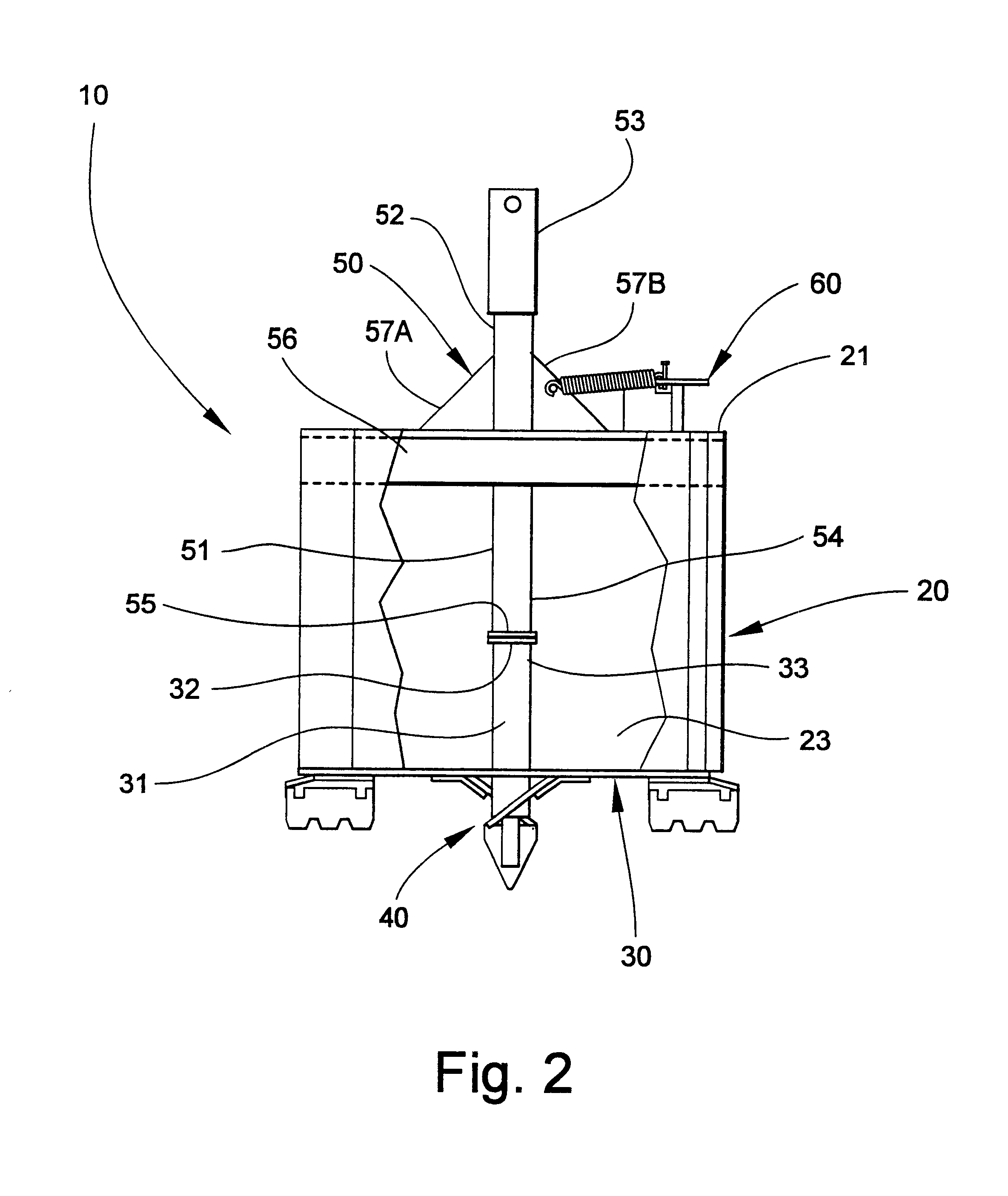Earth boring bit
a technology of earth boring and earth borer, which is applied in the direction of drilling pipes, drilling with mechanical conveying, cutting machines, etc., can solve the problems of increasing the amount of earth falling from the auger, reducing the accuracy with which the hole is bored, and reducing the accuracy of the bore hole. , to achieve the effect of reducing friction
- Summary
- Abstract
- Description
- Claims
- Application Information
AI Technical Summary
Benefits of technology
Problems solved by technology
Method used
Image
Examples
Embodiment Construction
Referring now specifically to the drawings, an earth boring bit according to the present invention is illustrated in FIG. 1 and shown generally at reference numeral 10. The earth boring bit 10 includes a cylindrical drum 20, which has upper and lower open ends 21 and 22, respectively, and interior and exterior sidewalls 23 and 24 (interior sidewall 23 is shown in FIG. 2). While the drum 20 may have any diameter, the drum 20 preferably has a diameter of between 12 inches and 36 inches. A bottom plate 30 upon which a cutting assembly 40 is carried is attached to the interior of the drum 20 adjacent lower open end 22. The plate 30 is shown in FIG. 1 in a closed position. As discussed more fully below with reference to FIGS. 3 and 4, the cutting assembly 40 is used to cut progressive slices of earth as the hole is being bored. The upturned earth is retained within the drum 20 by the plate 30 until the upturned earth is removed from the drum 20 at a location away from the hole. As is sho...
PUM
 Login to View More
Login to View More Abstract
Description
Claims
Application Information
 Login to View More
Login to View More - R&D
- Intellectual Property
- Life Sciences
- Materials
- Tech Scout
- Unparalleled Data Quality
- Higher Quality Content
- 60% Fewer Hallucinations
Browse by: Latest US Patents, China's latest patents, Technical Efficacy Thesaurus, Application Domain, Technology Topic, Popular Technical Reports.
© 2025 PatSnap. All rights reserved.Legal|Privacy policy|Modern Slavery Act Transparency Statement|Sitemap|About US| Contact US: help@patsnap.com



